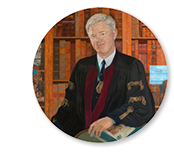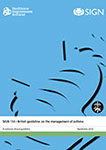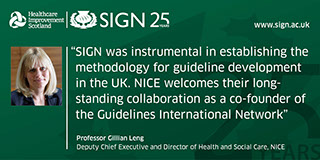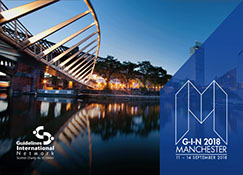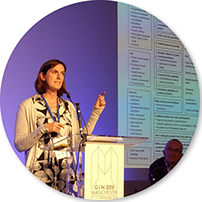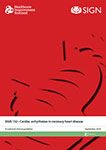2003
Formal agreement with NICE on the principles of working together

2004 The Scottish Parliament
Building opens
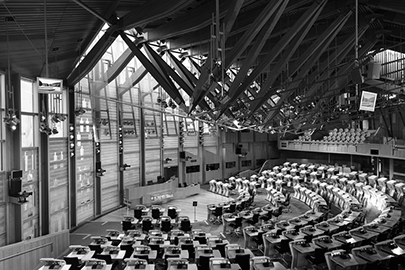
2003
SIGN is a founding member of the Guidelines International Network (G-I-N)
SIGN hosts the first
G-I-N conference.
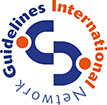
Guidelines International Network
2004
Publication of first SIGN guideline using consensus methodology - SIGN 77: Postoperative management in adults
This guideline used a combination of consensus and standard SIGN methodology, dependent on the evidence base, for each question. It was the first time SIGN had included consensus methodology. By doing so it enabled SIGN to develop a guideline to help address the variability in the topic area and the repeated calls for a guideline.
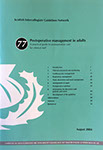
2007
The first patient version of a SIGN guideline is published
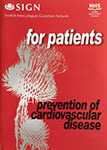
2005
SIGN becomes part of NHS Quality Improvement Scotland (Healthcare Improvement Scotland from 2011)
2004
First edition of SIGN/BTS British guideline on the management of asthma is published
1999
Publication of SIGN 39 - the first SIGN methodology manual
Introduction of the internally developed grading system.
1993
Publication of the CRAG report on clinical guidelines
1994
Jim Petrie, SIGN chairman from 1994 to 2001
Portrait (detail) by Victoria Crowe, RCPE collection.
1995
First SIGN publication
Clinical guidelines: criteria for appraisal for national use.
1996
The quick reference guide is made a stand-alone publication
Previously these had been included as part of the full guideline.
1993
First meeting of the SIGN Council
SIGN is established, it is the first national guideline group in the UK and one of the very first in the world.

1995
First SIGN guideline is published: Prophylaxis
of venous thromboembolism
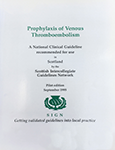
No.1

2008
First edition of SIGN 100
A patient version of
SIGN 50 published to support patients, service users and carers on Guideline Development Groups.
Current SIGN 100
2009
Healthcare professionals in training group
The role of the group was to:
- to support junior representatives on SIGN Council
- improve dissemination to healthcare professionals in training
- encourage the use of audit as a tool for implementation by developing audit templates for each guideline
- network across specialties and Deaneries to support novel interventions for dissemination and implementation of SIGN guidelines.
2010
Establishment of Awareness volunteer role and training course
Involving patients and carers in SIGN’s dissemination and implementation strategy.
2013
2013
Health economic content, where relevant, is agreed to be routinely included in SIGN guidelines
2013
GP Atrial fibrillation package published
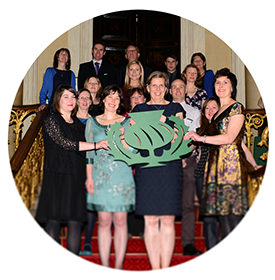
2013
SIGN time capsule
Physic Garden, Royal College of Physicians of Edinburgh
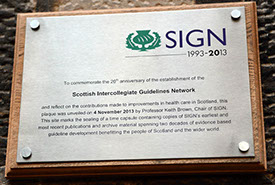
To commemorate the 20th anniversary of the establishment of SIGN a time capsule was sealed at RCPE.
Time capsule contents
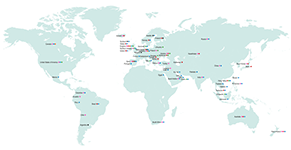
2013
Since the early days of SIGN it has been a focus for attention for guideline developers in other parts of the world.
Collaboration map
2014 Glasgow hosts the
Commonwealth Games

2014
Publication of SIGN 139: Care of deteriorating patients
SIGN 139 is unique as it is the first SIGN guideline that is wholly developed using consensus methodology.
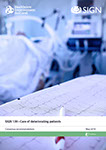

2015
SIGN and Pharmacy
compact
The Pharmacy and SIGN
Compact is a partnership
agreement between SIGN,
the Royal Pharmaceutical
Society in Scotland, Healthcare Improvement Scotland and pharmacists who work with us.
It is designed to facilitate a
clearer understanding about
what we can expect from each other to ensure meaningful and sustainable relationships with clinical communities, and take forward improvements to
patient care.
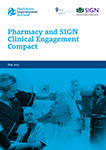
SIGN and Pharmacy compact
2016
SIGN and Nursing compact
The Nursing and SIGN Compact was a partnership agreement between SIGN, the Royal College of Nursing, Healthcare Improvement Scotland and nurses who worked with us.
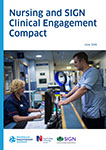
SIGN and Nursing compact
2017
SIGN consensus methodology developed Due to variation in the topics being proposed for SIGN guidelines the team have developed a standard SIGN consensus methodology to be trialled with the next appropriate topic.
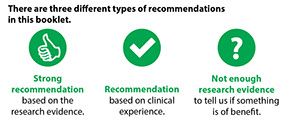
2015
DECIDE
Patient versions developed that now have an evidence-based design.
2016
Guidelines in the era of
realistic medicine
Written by Roberta James and John Kinsella, this article was published in response to the annual report on Realistic Medicine from the Scottish Chief Medical Officer.
Journal of the Royal College of Physicians of Edinburgh, Volume 46
Guidelines in an era of realistic medicine
2017
SIGN 154: Pharmacological management of glycaemic control in people with type 2 diabetes is published
This topic was a chapter in SIGN 116: Management of diabetes. It was decided to publish the update to this chapter as a stand-alone guideline. This was due to the volume of new evidence relating to this topics since the publication of SIGN 166 (2010) and to support the publication of a revised Scottish Diabetes Prescribing Strategy.
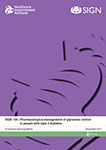
Celebrating 25 years
of improving patient care
through SIGN guidelines
SIGN
is 25
2018




1996 Dolly the sheep, the first mammal to have been successfully cloned from an adult cell, is born at The Roslin Institute
Photo by Toni Barros, used under CC BY-SA 2.0 / black and white from original
2011 Prescription charges abolished in Scotland
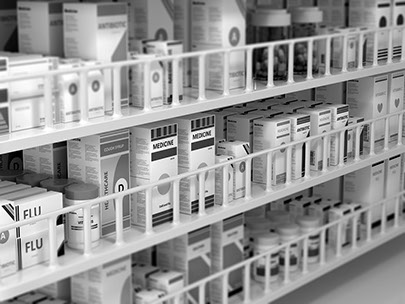
1997
SIGN 51: Stable angina
The first guideline with patient representation on the guideline development group.
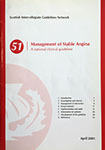
1998
Twelve new SIGN guidelines were published this year
The 12 guidelines published in 1998 showcase the variety of topics and settings SIGN guidelines have covered.
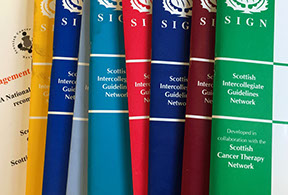
2001
Establishment of SIGN patient network
Consultative body for SIGN allowing
the concerns of patients and carers to influence guidelines.
2002
Started to systematically review the literature on patients’ and carers’ experiences and preferences
Ensures that the issues that mattered to patients and carers were reflected in guidelines.
1997
SIGN Executive established as a separate organisation based at the Royal College of Physicians of Edinburgh
www.rcpe.ac.uk
2001
First edition of SIGN 50 guideline methodology manual published
Current SIGN 50
1997
Launch of the SIGN website
The initial SIGN website averaged 350 hits per day.
1996
Research recommendations were added to guidelines
1999
The establishment of NICE (National Institute for Health and Care Excellence)
2002
CRAG conference on the impact of SIGN guidelines

2010
Many organisations have taken an interest in our methods and have either visited us in Scotland or invited us to visit and speak to them in their home countries.
Presentations included:
Course on guideline development, Singapore and Denmark
Guidelines International Network conference, USA
EBM course, Czech republic
HTAi conference, Ireland
Visitors included:
Dr Alla Stephanenko, Ministry of Health, Ukraine
Peter Moodie, Medical Director PHARMAC, New Zealand
Michael Smith, Senior Med Adviser, Australian Commission on Safety and Quality in Healthcare
Dr Roza Sarimim, Malaysia
Dr Phillip Crowley, Deputy CMO and Dr Deidre Mulholland, Head of Standards, HIQA, Ireland
Professor Ein Soon Shin and colleagues, EQHA Women’s University, Seoul
SIGN
is 20
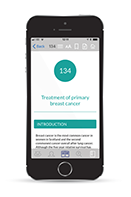
2012
Bear brought home from the 2012 G-I-N conference Berlin


2011
The award winning SIGN App is launched
Over 142,989
downloads to date
